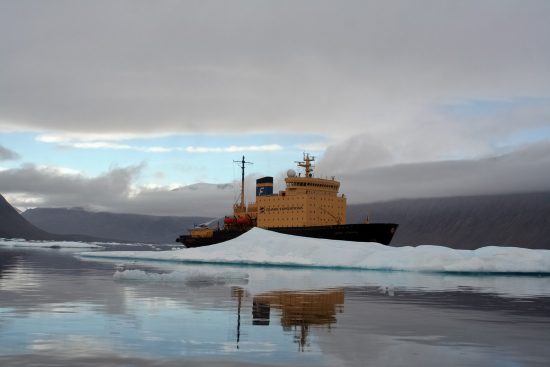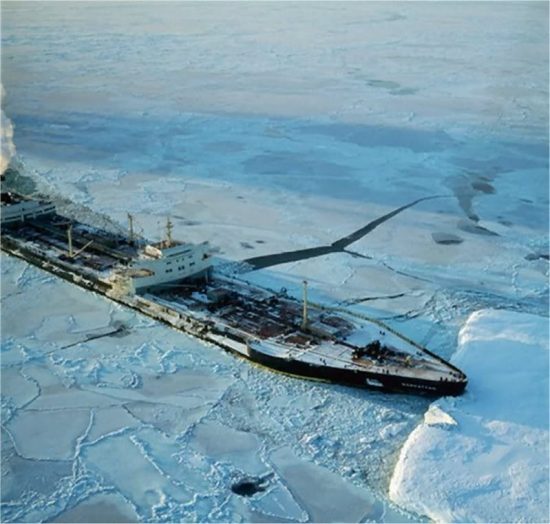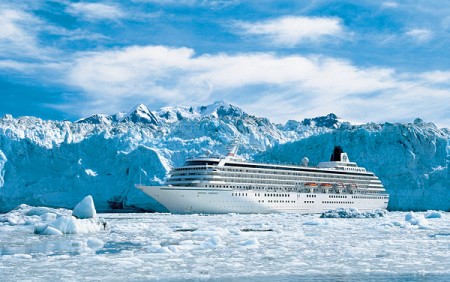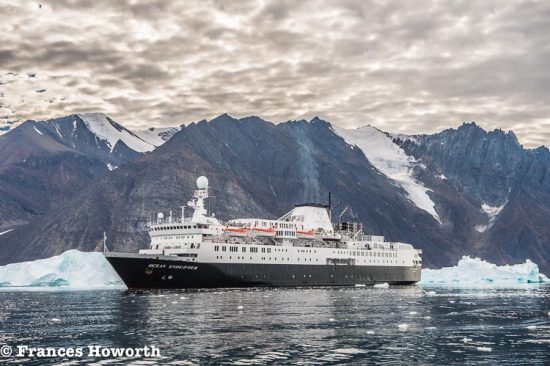
The first voyage to complete a transit of the Northwest Passage, joining the waters of the Pacific Ocean and Atlantic Ocean through the Canadian Arctic archipelago and the Arctic Ocean, began in 1903.
Commanded by Roald Amundsen sailing in the Norwegian sloop Gjøa, the voyage was completed on 30 August 1906.

In 2005 nearly 100 years later Kapitan Khlebnikov, a Russian ice breaking ship made two transits, first eastbound and a return trip westbound. On her second transit she made the 100th transit by ship in 100 years.
Since 2005 many many ships each carrying more and more passengers have passed in through these precious waters each a threat to the pristine conditions that prevail here and each an accident waiting to happen.
During the height of the Cold War, the American nuclear submarine USS Sovereign negotiated the passage east to west, spending part of the time submerged. The USS Skate, sailing west to east in 1962, followed her.

In 1969, after the discovery of oil at Prudhoe Bay in Alaska, the 150,000-ton American tanker Manhattan became the first tanker to attempt the commercial exploitation of the passage. Heavily and expensively strengthened to meet ice, and helped by two ice-breakers and by air reconnaissance, the giant tanker forced her way from Greenland to Prudhoe Bay in less than a month; but on the return voyage carrying one symbolic barrel of oil she suffered severe damage from ice. The experience was discouraging enough to divert American attention to the building of the Alaskan pipeline to transport oil overland.
Each year, it seems, sees a further landmark of Arctic exploration.
Since 2000 the shrinkage of sea ice in the Arctic has increased to a rate of 8 per cent per decade, and scientists estimate that some time between 2050 and 2100 (and perhaps even earlier) there will be no sea ice summer’s end.
With Canadian and US governments in dispute over the rights to shipping routes through the Northwest Passage the impact on the region’s indigenous inhabitants and wildlife is a cause of growing alarm.
There seems no end to the demand for polar expeditions. In 2016 Crystal Cruises sailed their 69,000 gross ton passenger ship Crystal Serenity loaded with over 1700 passengers and crew through the Passage.

At the Werften Shipyard in Germany, now owned by Crystal Cruises, they are building the first in a series of 20,000gt Crystal Endeavour Class polar expedition yachts for service in 2018.
The Nunavut government’s Economic Development and Transportation department has released a report that outlines new laws and regulations to assist tourism operators wishing to visit various communities in the North.
According to that report, the number of vessel voyages through Nunavut waters has increased to 40 in 2015, from 11 in 2005. The estimated number of passengers on those vessels in that time has also increased to 3,680 from1,045.
Pleasure craft voyages have also increased from nine in 2005 to 30 in 2014. That upward trend is expected to increase as the Northwest Passage becomes more navigable.
For better or for worse, the diminishing ice is on the brink of transforming the idea of a navigable passage from chimera to a realty.

Frances and Michael Howorth explored the North West Passages onboard Ocean Endeavour with the help of Destination Canada www.destinationcanada.com and Adventure Canada www.adventurecanada.com We are truly grateful to them both for the opportunity they provided with us to do our job.
